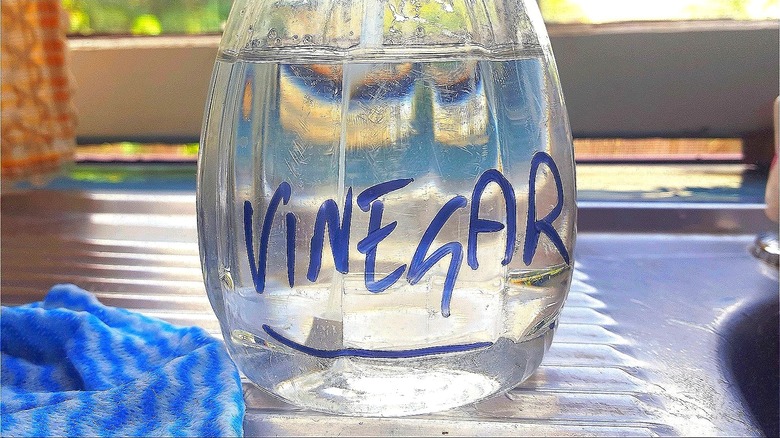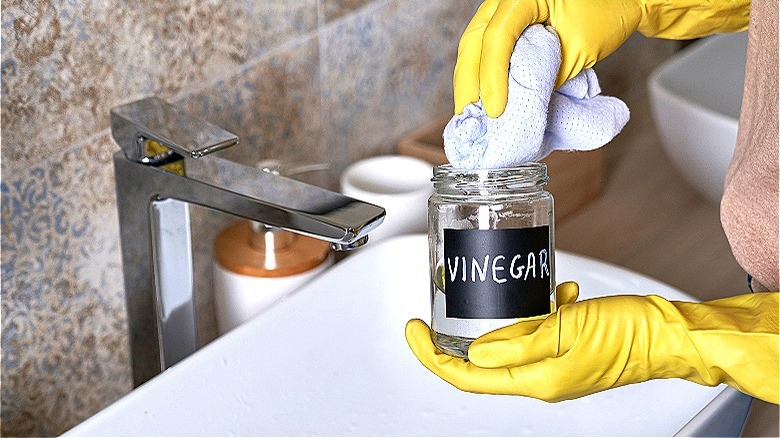How Can You Safely Store Vinegar For Cleaning?
From cleaning filthy floors and erasing mold in your fridge to degriming cutting boards and descaling coffee makers, vinegar is a versatile cleaning tool most homeowners can't live without. What's more, the tangy liquid is non-toxic and eco-friendly; a major plus if you're sanitizing living spaces shared with children and pets. Consequently, it's no surprise many families buy vinegar in bulk. Yet, this raises a supplemental issue: How can you safely store all the vinegar you use for cleaning? Turns out maximizing vinegar's shelf life simply requires housing it in a cool, dark place.
While there are multiple types of vinegar on the market, distilled white vinegar and cleaning vinegar are traditionally the varieties used to tackle household chores. The only difference between the two is their levels of acidity. White vinegar contains 5% acetic acid while cleaning vinegar boasts 6%. The remainder of the product is water. Acetic acid is what gives vinegar its cleaning power. The organic compound compromises the structure of some types of dirt and oils, in addition to dissolving hard water stains and soap scum and loosening caked-on grime.
Moreover, homeowners the world over are vinegar loyalists because of its stability. According to The Vinegar Institute, since vinegar is a fermented product with an acidic nature that doesn't require refrigeration, it features an almost indefinite shelf life. Additionally, since distilled white vinegar and cleaning vinegar are colorless, time will neither affect their hue nor prompt the development of haze or sediment.
Keep vinegar in a climate-controlled area
You're cleaning with vinegar, not consuming it. Consequently, you'd think that you could simply buy a bunch of bottles, toss them to the side, and the solution would be flawlessly effective every time you went to use it. Not quite. While its acidity makes vinegar extremely stable, it's not able to perform perfectly in perpetuity. A hint of this is given by the "best by" date printed on vinegar containers. This stamp signifies when the vinegar will be at its peak. Traditionally, manufacturers will set the date for two to five years from the production period.
The key to safely maximizing vinegar's shelf life is proper storage. Place vinegar in a cool, dark space away from direct heat and sunlight, such as a basement cabinet. In addition, keep the liquid in its original glass or plastic container. Avoid transferring it to an iron, tin, brass, or copper vessel as this may trigger corrosion or leaching. Also, once you open a bottle of vinegar to clean, try to limit how long you leave the top off to reduce the amount of oxygen exposure. Ideally, it's best to return the cap immediately and screw it on tight to keep it as fresh as possible. Finally, since vinegar's acidity level is reduced when exposed to moisture, don't store bottles of vinegar in unheated garages during the winter as condensation will form inside the container as the temperature rises or you bring the bottle inside to use.

